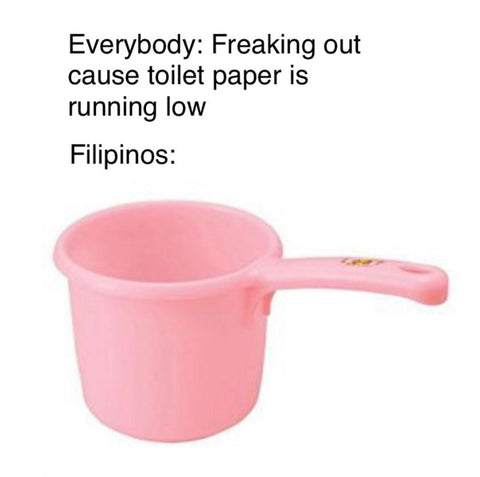Maybe you’ve seen the viral video of a woman who was able to live two years and barely generate enough trash to fill up a 16-oz jar. When I first watched it I was in awe, inspired, but also lost—trying to find any semblance of my Filipino life in hers.
I pictured the trash my Manila household generated in a week. I began to make a tally of the sinigang and Mama Sita ready mixes, the instant pancit canton, and the many other plastic-packaged things we regularly buy from my nearest supermarket.
The zero-waste lifestyle is a commitment to eliminating the waste we generate and send to landfill. I wondered, “where do I even begin?”
My life is completely at odds with the image of a zero-waste advocate. At least, the perfectly composed snapshots you find all over Instagram and YouTube of airy kitchens and all-organic bathroom shelves. I’ve watched many of these videos since and I learned, it’s better to have millions of people doing zero-waste imperfectly, than only a small handful doing it perfectly.
So, slowly, I’ve made small changes here and there.
By being more mindful about the way I consume, I was surprised by what came easily.
Consider this: Filipinos are actually masters of reusing and recycling!
When you’re raised in a Filipino household, you inherit a whole childhood of life hacks to reduce your waste.
When you’re raised Filipino, you’re taught to “simot”, consume something completely. It’s become second nature to finish every grain of rice on our plates, squeeze the toothpaste tube until it’s completely flat, or even water down bottles of soap to make sure we’ve used all the product.

It’s not about being “kuripot” (stingy)—though it is sometimes that—it’s actually about getting bang for our buck (“sulit”) and being resourceful (“madiskarte”). All things that are quintessentially Filipino.
So, if, like me, you’re daunted by the transition to zero-waste (or less waste), start with what you know! Let’s take a look at money-saving lessons from our FIlipino childhood and see how we can use them for a more environmentally conscious lifestyle:
A “tabo” over toilet paper, any day
Why stockpile tissue paper, when you already have “tabo at timba” (dipper and pail)?
The tabo and timba are a household must-have for any Filipino family. It has many uses for cleaning around the house, but most especially within the bathroom. Sure, you could upgrade to a bidet, but adhering to the first tier of the buyerarchy of needs: use what you have!

Photo from Reddit
Bring your own containers, there might be leftovers
Two things you can count on: first, Filipino gatherings or “salu-salo” usually end with people taking home leftovers - no food goes to waste!
Second, the only thing better than pancit or adobo is days-old pancit or adobo.
So, the next time there’s a potluck or “salu-salo”, prepare your leftover containers. Instead of depleting your host’s cabinet of tupperware, they might appreciate you using your own!
Anything can be “Tupperware”
With tupperware in such high demand, people start getting creative with storage. In a Filipino household, you learn to never take cookie tins and ice cream tubs at face value. How many of us have opened a gallon of rocky road or some other flavour only to find frozen mystery meat instead? It’s disappointing every time.
Maling akala...hehehe pic.twitter.com/b3pukWWW
— paunawa (@paunawa) August 25, 2012
This is personally also true for non-food related storage. On the top shelf of my bedroom, I have Mrs. Fields and Danish cookie tins filled to the brim with what my mom calls “abubot” or knick-knacks treasured by my younger self - marbles, keychains, and photographs.
Single-use, what’s that?
On a related note, you’d be surprised what can (and should) be reused. Plastic shopping bags, takeout containers, plastic cutlery & cups, even gift bags & wrappers - you name it, a Filipino somewhere has probably reused it!
Tupperware? I don't know her. In this house we reuse tofu tubs and takeout containers lol. pic.twitter.com/xrrfGI5mz4
— Karon Liu (@karonliu) April 20, 2020
Before I owned a reusable market bag, I would save old grocery bags to use for taking out the trash. Also, if you can’t avoid ordering in or getting take-out, know you can put those takeout containers and cutlery to good use! My cupboard has an entire shelf dedicated to takeout containers and cutlery, just in case.
Hand-me-downs for life!
I’m an only child and even I’ve received my fair share of hand-me-downs from family and friends. Even as an adult I’d gladly take something off your hands if I can love it and keep it. Thanks to the rising popularity of slow fashion, there’s less of a stigma to “thrifting”, wearing secondhand, or mending your clothes.

Once garments do reach the end of their life, they start their afterlife as “basahan” or wet rags! And so the cycle continues...
Skip the lufa, exfoliate with a rock
It’s called a “batong panghilod” and it’s the Filipino secret to baby-soft skin. On the mainstream beauty market they’re sold as pumice stones. You could save a few bucks by keeping an eye out for a suitable stone outdoors. Just make sure you use one with a smooth surface so you don’t do any damage!
One of the things I missed using dito sa probinsya- batong panghilod. 😂 pic.twitter.com/wayJ63kqWI
— Mariah's top note (@mukmukero) December 25, 2015
Did your Filipino family do some of these things, too? What other creative ways did they reuse and recycle?
Nicolette Bautista

Nicolette is a Manila-based creative freelancer and Cambio & Co's Community Storyteller. She's written on the digital space about mom-and-pop's, small businesses, and social enterprises. In the pursuit of her eclectic interests, Nicolette has a broad portfolio including short videos, album art, and storybook illustrations! Find her on Instagram @of_nicolette and ofnicolette.wordpress.com



Leave a comment